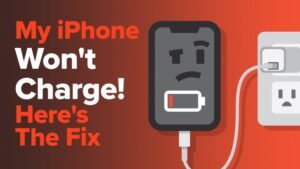Curious about what causes a battery to swell? Well, we’ve got some insights for you! Battery swelling can be a frustrating issue, as it not only affects the performance of your device but can also be a safety concern. In this article, we will dive into the reasons behind this phenomenon and explore the potential solutions to rectify it. So, if you’ve ever wondered why your battery expands and what you can do about it, keep reading!
What Causes a Battery to Swell
Batteries are essential components of electronic devices, powering our smartphones, laptops, and other portable gadgets. However, there are instances when batteries can swell, causing concerns for users. Battery swelling, also known as battery bulge, is a common issue that affects various types of batteries, including lithium-ion (Li-ion), nickel-metal hydride (NiMH), and lead-acid batteries. In this article, we will explore the factors that can cause a battery to swell and provide insights into how to prevent and address this problem.
Understanding Battery Swelling
Battery swelling occurs when the internal components of a battery expand or increase in size. The expansion can cause the battery to become larger than its original dimensions, resulting in a bulging appearance. The main culprit behind this phenomenon is the buildup of gas inside the battery. As the internal pressure increases, it pushes against the casing, causing it to deform and swell.
Factors Contributing to Battery Swelling
There are several factors that can contribute to battery swelling. Understanding these factors can help users identify potential risks and take appropriate measures to prevent battery issues. Here are some common causes of battery swelling:
- Overcharging: Charging a battery beyond its recommended voltage or for an extended period can lead to excess charge accumulation. This can cause the battery to generate more heat and produce gas, leading to swelling.
- Overheating: High temperatures can accelerate the production of gas inside a battery, leading to swelling. Exposing a battery to extreme heat, such as leaving it in a hot car or near a heat source, can increase the risk of swelling.
- Physical Damage: Dropping or mishandling a battery can cause internal damage to its components, leading to a release of gas and subsequent swelling.
- Manufacturing Defects: Occasionally, batteries may have manufacturing defects that make them prone to swelling. These defects can involve issues with the casing, internal components, or overall design of the battery.
- Age and Wear: Batteries have a limited lifespan, and as they age, their internal chemistry undergoes changes that can contribute to swelling. Additionally, repeated charging and discharging cycles gradually wear out a battery, increasing the chances of swelling.
Effects and Dangers of Swollen Batteries
While battery swelling might seem like a minor inconvenience, it should not be taken lightly. Swollen batteries can have various effects and pose potential dangers. Here are some potential consequences of using a swollen battery:
- Reduced Performance: Swelling can affect the overall performance of the battery, reducing its capacity and runtime. This can result in shorter battery life and decreased device functionality.
- Device Damage: A swollen battery can exert pressure on the internal components of a device, potentially causing damage to neighboring circuitry or other sensitive parts. This can lead to malfunctions or even render the device inoperable.
- Leakage and Chemical Hazards: In severe cases, a swollen battery may leak electrolyte, a corrosive substance that can damage surrounding objects and pose a chemical hazard if it comes into contact with skin or eyes.
- Fire or Explosion Risk: Although rare, a severely swollen battery can rupture or catch fire due to the buildup of gas and pressure. The release of flammable gases within the battery can ignite, leading to potentially dangerous situations.
Preventing Battery Swelling
While battery swelling can occur unexpectedly, there are preventive measures that users can take to minimize the risk. By following these guidelines, you can increase the lifespan of your batteries and reduce the likelihood of experiencing swelling:
Follow Manufacturer Recommendations
Manufacturers provide specific instructions regarding the charging, storage, and usage of batteries. Adhering to these guidelines is crucial to prevent potential issues. Some key recommendations include:
- Using only recommended chargers and charging cables
- Avoiding overcharging or leaving batteries connected to a power source for extended periods
- Storing batteries in a cool, dry place away from direct sunlight or extreme temperatures
- Replacing batteries when they reach the end of their recommended lifespan
Handle Batteries with Care
Proper handling can help prevent physical damage that may lead to battery swelling. Consider the following tips:
- Avoid dropping or subjecting batteries to impact
- Do not expose batteries to extreme temperatures or moisture
- Use protective cases or covers for portable devices to reduce the risk of impact damage
Regularly Inspect Batteries
Performing regular visual inspections of batteries can help detect early signs of swelling or damage. Keep an eye out for the following indicators:
- Bulging or expanded appearance
- Changes in weight or size compared to a new battery
- Signs of leakage or corrosion
If you notice any of these signs, it is recommended to discontinue using the battery and seek professional assistance or dispose of it properly.
Proper Disposal
When it comes to disposing of swollen or damaged batteries, it is essential to handle them responsibly. Improper disposal can harm the environment and pose risks to waste management workers. Many communities have specific guidelines for battery disposal, including designated drop-off locations or recycling centers. Check with local authorities or recycling organizations to determine the best method for disposal in your area.
Addressing Battery Swelling
Despite preventive measures, there may still be instances where a battery swells. If you encounter a swollen battery, it is crucial to handle it with caution and take appropriate action:
Isolate and Remove the Battery
If the swollen battery is removable, immediately power off the device and proceed to remove the battery. This will help prevent further damage to the device and minimize potential risks.
Secure the Battery
Place the removed battery in a secure, non-flammable container or bag. This will prevent accidental damage, leakage, or exposure to other flammable materials.
Professional Assistance
It is recommended to contact the device manufacturer or seek professional assistance when dealing with a swollen battery. They can provide guidance on how to safely dispose of the battery and offer solutions for device repair or replacement if necessary.
Never Attempt to Fix or Modify a Swollen Battery
It is important to note that attempting to fix or modify a swollen battery yourself can be extremely dangerous. Avoid puncturing, disassembling, or applying pressure to the swollen battery, as this can lead to gas release, leakage, or even explosion.
In conclusion, battery swelling is a common issue that can affect various types of batteries. Understanding the causes and taking preventive measures can help minimize the risk of experiencing this problem. By following manufacturer recommendations, handling batteries with care, and properly disposing of them, users can prolong battery lifespan and ensure the safe operation of their electronic devices. If a battery does swell, it is crucial to handle it with caution and seek professional assistance to address the issue effectively.
Frequently Asked Questions
What are the common causes of battery swelling?
There are several factors that can cause a battery to swell:
How does overcharging affect battery swelling?
Overcharging a battery can lead to the buildup of gas inside it, causing it to swell. This is commonly seen in lithium-ion batteries.
Can a battery swelling be caused by extreme temperatures?
Yes, both extreme heat and cold can contribute to battery swelling. High temperatures accelerate chemical reactions within the battery, while cold temperatures can decrease its efficiency and cause gas buildup.
What role does physical damage play in battery swelling?
Physical damage, such as punctures or impacts, can lead to internal short circuits within the battery. These short circuits generate heat and can cause the battery to swell.
Are manufacturing defects a common cause of battery swelling?
Yes, manufacturing defects can contribute to battery swelling. If a battery is not properly manufactured or sealed, it may be prone to gas buildup and subsequent swelling.
Can using incompatible chargers or cables result in battery swelling?
Using chargers or cables that are not specifically designed for the battery can lead to overcharging, overheating, and ultimately, battery swelling. It is important to use compatible charging accessories.
Final Thoughts
Excessive heat, overcharging, and physical damage are the primary culprits that cause a battery to swell. When a battery is exposed to high temperatures, the internal components can expand, leading to swelling. Overcharging can also generate excess heat and cause the battery to expand beyond its normal size. Additionally, physical damage, such as a puncture or impact, can cause the internal layers of the battery to separate, resulting in swelling. Understanding these factors is crucial in preventing battery swelling and ensuring the safe and efficient use of electronic devices.


